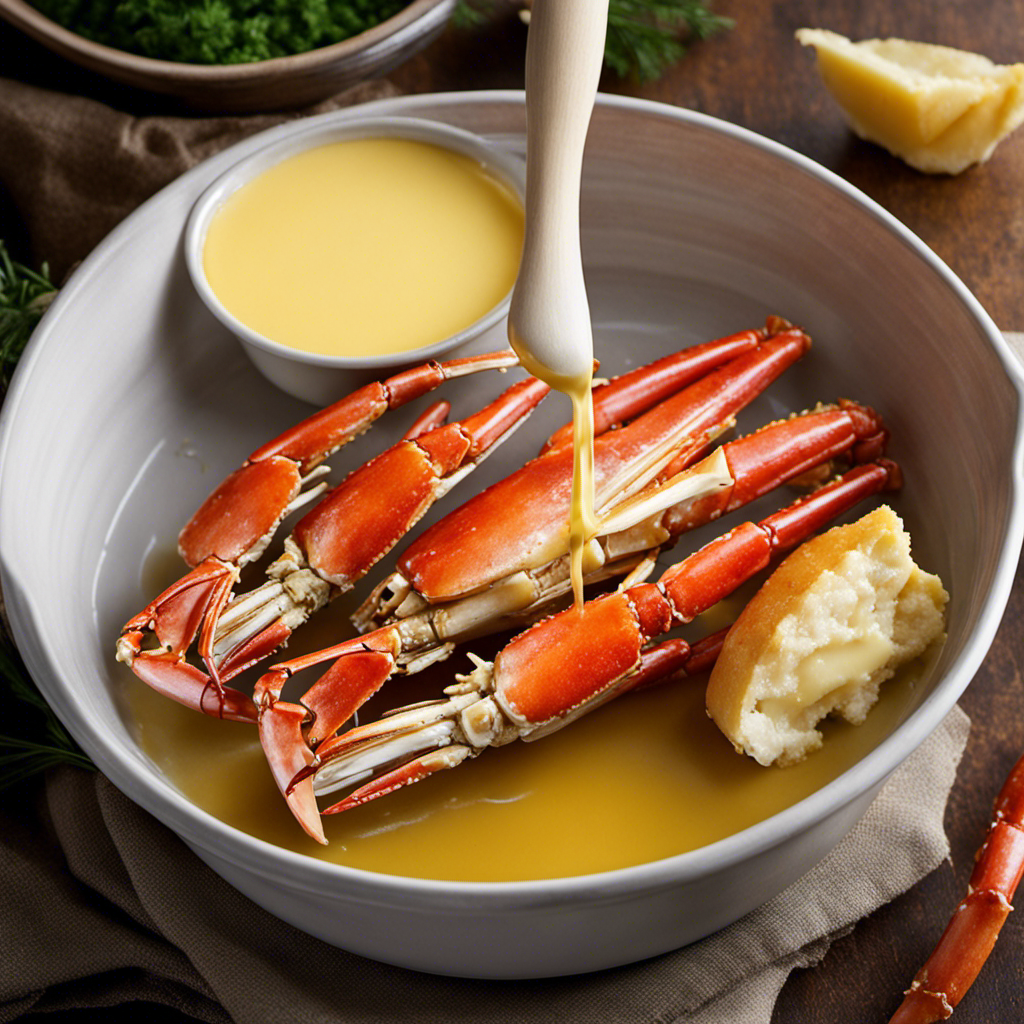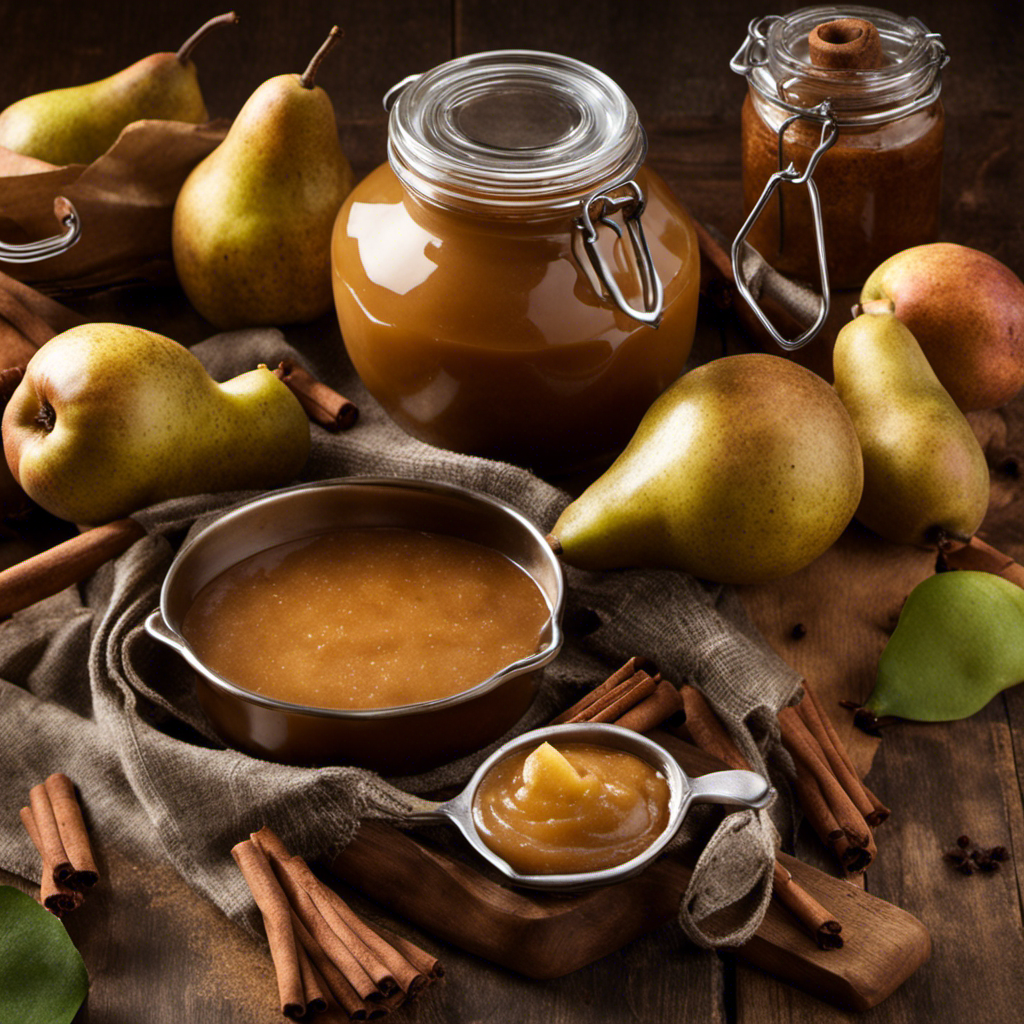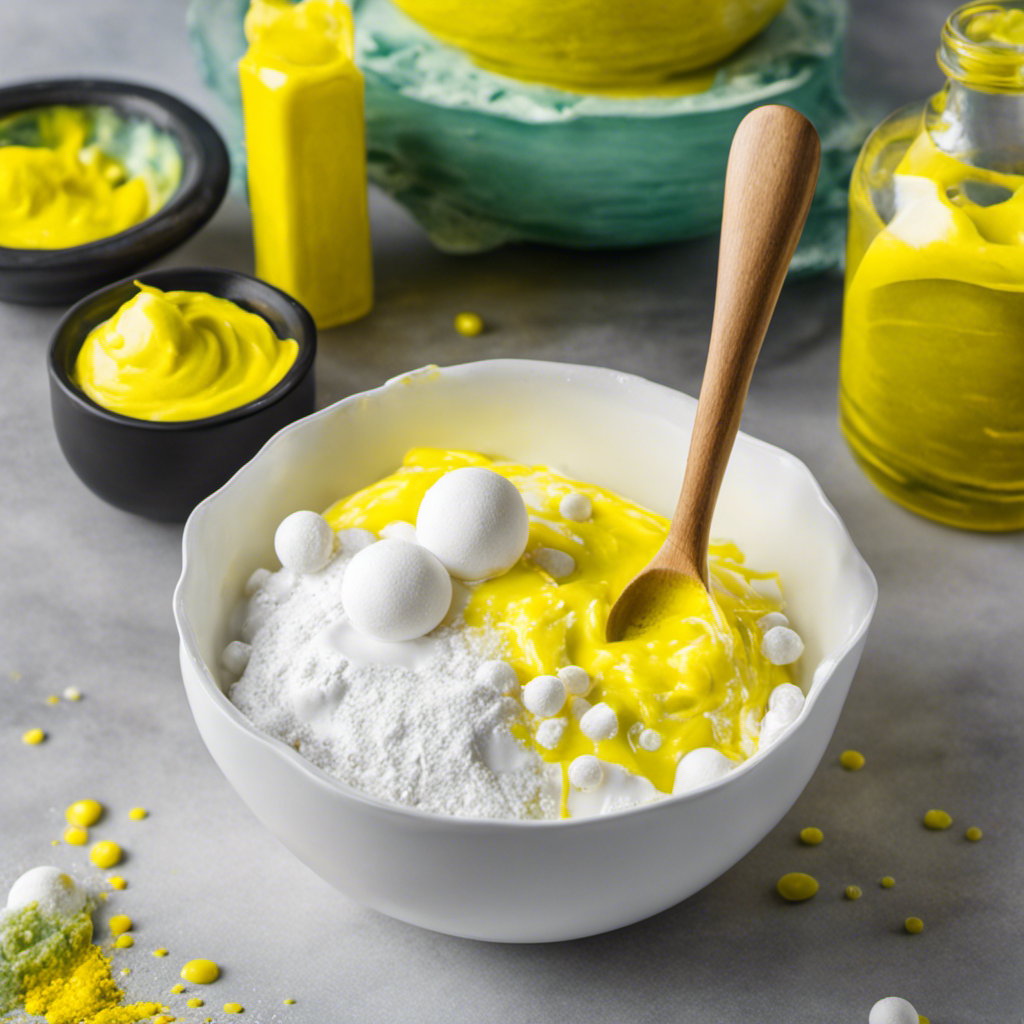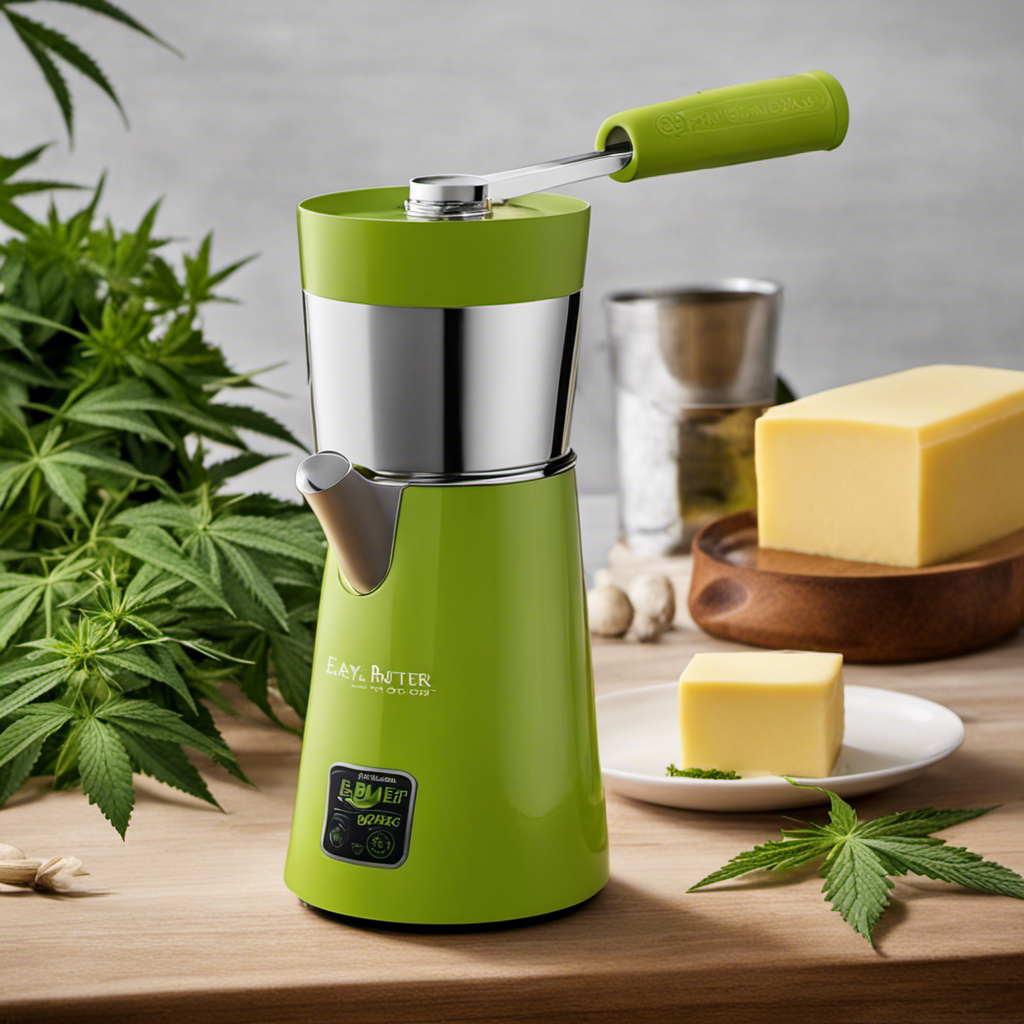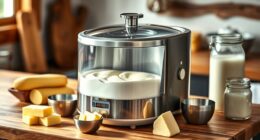I understand if you’re wondering, “What exactly can you do with cookie butter?”
Well, let me tell you, there are so many delicious and creative ways to enjoy this irresistible spread. From simple snacks to mouthwatering desserts, cookie butter can elevate your meals to a whole new level.
Whether you’re looking for unique ways to incorporate it into your cooking or simply want to enjoy it on its own, this article will show you all the exciting possibilities.
Get ready to indulge in the sweet and creamy world of cookie butter!
Key Takeaways
- Cookie butter can be enjoyed in simple ways such as spreading it on toast, dipping apple slices in it, making cookie butter sandwiches, or using it as a topping for pancakes or waffles.
- There are creative recipes that incorporate cookie butter, such as making cookie butter pancakes, blending it into smoothies, mixing it into overnight oats, or creating cookie butter cocktails like a martini or a white Russian.
- Cookie butter can be used in unique ways in meals, such as making cookie butter brownies, trying cookie butter chicken stir-fry, baking cookie butter stuffed French toast, cooking cookie butter glazed salmon, or experimenting with cookie butter pizza crust.
- There are delicious snack ideas with cookie butter, like blending it into smoothies with bananas and almond milk, spreading it on pancakes or waffles, mixing it into oatmeal, drizzling it over Greek yogurt with granola and berries, or adding crushed cookies to cookie butter smoothies for a crunchy texture.
Simple Ways to Enjoy Cookie Butter
If you’re looking for simple ways to enjoy cookie butter, you can spread it on toast or dip apple slices into it. But there are so many more delicious options to explore!
One of my favorite ways to enjoy cookie butter is by making cookie butter sandwiches. Simply spread a generous amount of cookie butter between two slices of bread, and you have a sweet and indulgent treat. The creamy and rich texture of the cookie butter pairs perfectly with the softness of the bread.
Another fantastic way to enjoy cookie butter is by making cookie butter smoothies. Blend together some cookie butter, milk, banana, and a handful of ice, and you have a creamy and satisfying smoothie that’s packed with flavor. It’s like having a dessert in a glass!
Creative Recipes Using Cookie Butter
There are numerous creative recipes you can make using cookie butter. If you’re tired of the same old breakfast routine, why not try incorporating cookie butter into your morning meal? Here are some delicious cookie butter breakfast ideas to start your day off right:
- Cookie Butter Pancakes: Add a dollop of cookie butter to your pancake batter for a sweet and indulgent twist on a classic breakfast favorite.
- Cookie Butter Smoothie: Blend together banana, almond milk, Greek yogurt, and a spoonful of cookie butter for a creamy and flavorful morning treat.
- Cookie Butter Overnight Oats: Mix cookie butter into your overnight oats for a rich and satisfying breakfast that will keep you full until lunchtime.
But cookie butter isn’t just for breakfast! It can also be used to create unique and tasty cocktails. Here are a few ideas to get you started:
- Cookie Butter Martini: Shake together vodka, Irish cream liqueur, cookie butter, and ice for a creamy and decadent cocktail.
- Cookie Butter White Russian: Mix together vodka, coffee liqueur, cookie butter, and cream for a sweet and dessert-like twist on a classic cocktail.
- Cookie Butter Old Fashioned: Muddle together sugar, bitters, and cookie butter, then add bourbon and ice for a rich and flavorful drink that’s perfect for sipping.
Whether you’re looking to spice up your breakfast routine or impress your friends with a creative cocktail, cookie butter is a versatile ingredient that can take your recipes to the next level.
Unique Ways to Incorporate Cookie Butter Into Your Meals
Looking to add a unique twist to your meals? Consider incorporating cookie butter into your recipes for a burst of delicious flavor. Cookie butter, with its creamy texture and sweet taste, can be used in a variety of ways to elevate your dishes. From sweet treats to savory delights, the possibilities are endless.
Here are some unique baking ideas and savory cookie butter dishes to inspire you:
| Sweet Treats | Savory Delights | Unique Baking Ideas |
|---|---|---|
| Cookie butter brownies | Cookie butter chicken stir-fry | Cookie butter stuffed French toast |
| Cookie butter cheesecake | Cookie butter glazed salmon | Cookie butter banana bread |
| Cookie butter ice cream | Cookie butter chicken wings | Cookie butter pizza crust |
Whether you’re looking to satisfy your sweet tooth or experiment with unexpected flavor combinations, cookie butter can add a delightful twist to your meals. So go ahead, get creative and enjoy the deliciousness that cookie butter brings to your table.
Delicious Cookie Butter Snack Ideas
Indulge in these delicious snack ideas that will satisfy your cravings and offer a unique twist to your usual treats.
Cookie butter is not just for spreading on toast or dipping with cookies. Get creative and try these mouthwatering snack ideas:
-
Cookie Butter Smoothies: Blend cookie butter with bananas, almond milk, and a touch of honey for a creamy and indulgent smoothie. Add a scoop of protein powder for an extra boost of nutrition and a cookie dough-like flavor. Top it off with a sprinkle of crushed cookies for a crunchy texture.
-
Cookie Butter Breakfast Ideas: Spread cookie butter on warm pancakes or waffles for a decadent breakfast treat. Mix it into your oatmeal for a sweet and nutty twist. Drizzle it over Greek yogurt with granola and fresh berries for a delightful parfait.
These snack ideas will surely satisfy your cravings and make your taste buds dance with joy!
Mouthwatering Desserts With Cookie Butter
Get ready to satisfy your sweet tooth with these mouthwatering desserts made with cookie butter.
One of my all-time favorites is the mouthwatering cookie butter milkshake. It’s a creamy blend of cookie butter, vanilla ice cream, and milk, topped with whipped cream and a drizzle of cookie butter sauce. The combination of the rich, nutty cookie butter and the cold, sweet ice cream is simply irresistible.
Another delectable treat is cookie butter stuffed French toast. Imagine thick slices of bread, generously slathered with cookie butter, sandwiched together and dipped in a mixture of eggs, milk, and cinnamon. Then, they’re cooked until golden brown and crispy on the outside, with a warm and gooey cookie butter center. It’s like having dessert for breakfast!
These desserts are guaranteed to leave you craving more.
Cookie Butter Pairings for the Perfect Treat
When it comes to indulging in the perfect treat, I’ve discovered that sweet and savory combinations can take your taste buds on a delightful adventure.
One unexpected ingredient that adds a delicious twist to any dish is cookie butter.
From spreading it on warm toast and topping it with crispy bacon for a mouthwatering breakfast, to drizzling it over roasted vegetables for a unique side dish, the possibilities are endless.
Don’t be afraid to experiment and try unexpected cookie butter pairings – you might just discover your new favorite flavor combination.
Sweet and Savory Combinations
Try combining the rich sweetness of cookie butter with the savory flavors of pretzels or bacon for a unique and delicious taste experience. When it comes to sweet and salty combinations, cookie butter opens up a world of possibilities.
Here are some unique cookie butter appetizers that will satisfy your cravings:
-
Cookie Butter Pretzel Bites: Take mini pretzels and spread a dollop of cookie butter on top. Bake them in the oven until the cookie butter melts and becomes gooey. The combination of the salty pretzel and the sweet cookie butter is simply divine.
-
Bacon-Wrapped Cookie Butter Stuffed Dates: Take pitted dates and stuff them with cookie butter. Wrap each date with a slice of bacon and secure it with a toothpick. Bake them until the bacon is crispy and the cookie butter is warm and gooey. The contrast of the smoky bacon and the rich cookie butter is a match made in heaven.
-
Cookie Butter and Cheese Quesadilla: Spread cookie butter on one side of a tortilla and sprinkle shredded cheese on top. Fold the tortilla in half and cook it on a skillet until the cheese is melted and the tortilla is crispy. The combination of the creamy cookie butter and the melted cheese is a delightful surprise.
These sweet and salty combinations will take your cookie butter experience to a whole new level. So go ahead and get creative with your cookie butter appetizers, and enjoy the deliciousness!
Unexpected Cookie Butter Pairings
After exploring the sweet and savory combinations of cookie butter, let’s delve into some unexpected pairings that will surely surprise your taste buds. Cookie butter isn’t just limited to being spread on toast or used as a dip for fruit. Oh no, it can be used in so many more creative ways!
One surprising way to enjoy cookie butter is by incorporating it into cocktails. Imagine a creamy, indulgent cookie butter martini or a cookie butter old fashioned. These unique libations will add a touch of sweetness and warmth to your happy hour.
But cookie butter isn’t just for happy hour! It can also be a delicious addition to your breakfast routine. How about cookie butter pancakes or waffles? Or even cookie butter French toast? These breakfast treats will take your mornings to a whole new level of decadence.
To help you explore these unexpected cookie butter pairings, here’s a handy table:
| Cookie Butter Cocktails | Cookie Butter Breakfast Ideas | Unexpected Cookie Butter Pairings |
|---|---|---|
| Cookie Butter Martini | Cookie Butter Pancakes | Cookie Butter Ice Cream |
| Cookie Butter Old Fashioned | Cookie Butter Waffles | Cookie Butter Popcorn |
| Cookie Butter White Russian | Cookie Butter French Toast | Cookie Butter Milkshake |
Unexpected Uses for Cookie Butter in Everyday Cooking
I’ve always been a fan of cookie butter. Recently, I discovered its versatility in cooking. There are so many creative cookie butter recipes and surprising taste combinations to try. This spread can truly elevate any dish. Whether you want to add a touch of sweetness to your breakfast or create a unique dessert, cookie butter has got you covered.
Creative Cookie Butter Recipes
There’s no shortage of delicious and inventive ways to use cookie butter in your recipes. Whether you’re looking for a tasty breakfast option or a decadent sauce, cookie butter can add a unique and delightful twist to your dishes.
Here are a few creative ideas to inspire you:
-
For breakfast:
-
Spread cookie butter on toast and top with sliced bananas for a sweet and satisfying start to your day.
-
Mix cookie butter into your oatmeal or yogurt for a rich and indulgent morning treat.
-
Whip up a batch of cookie butter pancakes or waffles for a breakfast that feels like dessert.
-
For sauces:
-
Drizzle warm cookie butter sauce over ice cream, brownies, or apple pie for an irresistible dessert topping.
-
Use cookie butter sauce as a dip for fresh fruit or pretzels for a delightful snack.
-
Incorporate cookie butter sauce into your favorite milkshake recipe for a creamy and flavorful twist.
With these creative ideas, you can take your cookie butter obsession to new heights and enjoy its deliciousness in various ways throughout the day.
Versatility in Dishes
To add a unique and delightful twist to your dishes, try incorporating cookie butter into a variety of recipes.
Not only is cookie butter delicious on its own, but it can also add a burst of flavor to drinks and elevate your breakfast recipes.
The versatility of cookie butter is truly remarkable. For a refreshing twist, try mixing it into milkshakes or smoothies. The creamy, sweet taste of cookie butter adds a whole new dimension to your favorite beverages.
When it comes to breakfast, cookie butter can be spread on toast, pancakes, or waffles for a decadent treat. You can also swirl it into oatmeal or yogurt for an extra touch of indulgence.
The possibilities are endless when it comes to incorporating cookie butter into your drinks and breakfast recipes. So go ahead, get creative, and enjoy the versatility that cookie butter brings to your dishes.
Surprising Taste Combinations
Combining unexpected flavors can result in surprisingly delicious taste combinations. I’ve always enjoyed experimenting with different ingredients in the kitchen, and I’ve discovered some truly unique pairings that have exceeded my expectations.
Here are a few surprising flavor combinations that you might want to try:
-
Cookie butter and bacon: The creamy sweetness of cookie butter pairs surprisingly well with the smoky, savory flavor of bacon. Spread some cookie butter on a crispy slice of bacon for an indulgent treat.
-
Cookie butter and pickles: The tanginess of pickles provides a refreshing contrast to the rich sweetness of cookie butter. Try adding a few pickle slices to your cookie butter sandwich for a unique twist.
-
Cookie butter and hot sauce: The spicy kick of hot sauce adds a bold and unexpected element to the creamy sweetness of cookie butter. Drizzle a little hot sauce on top of your cookie butter toast for a fiery flavor explosion.
These unconventional uses of cookie butter will definitely take your taste buds on a thrilling adventure!
Frequently Asked Questions
Can Cookie Butter Be Used as a Substitute for Butter in Baking Recipes?
Yes, cookie butter can be used as a substitute for butter in baking recipes. It adds a rich, sweet flavor to your baked goods. Additionally, cookie butter can be used as a spread on toast or as a topping for ice cream.
Can Cookie Butter Be Used as a Topping for Ice Cream?
When it comes to ice cream, cookie butter adds a creamy and indulgent touch. Its rich flavors blend perfectly with the cold sweetness, creating a decadent treat that will satisfy any sweet tooth.
Is Cookie Butter Suitable for People With Nut Allergies?
As someone with a nut allergy, I understand the importance of finding nut-free alternatives for cookie butter. It’s crucial to carefully read allergen labeling and take necessary precautions when choosing cookie butter products.
Can Cookie Butter Be Used as a Dip for Fruits and Vegetables?
Sure, you can definitely use cookie butter as a dip for fruits and vegetables! It adds a creamy and indulgent flavor to your healthy snacks. Besides that, you can also use it in various recipes or make your own homemade cookie butter.
Can Cookie Butter Be Used as a Filling for Homemade Chocolates?
When it comes to homemade chocolates, I love getting creative with fillings. Cookie butter is a delicious option that adds a unique flavor and creamy texture. Pair it with dark or milk chocolate for a decadent treat.
Conclusion
In conclusion, cookie butter is truly a versatile and delicious treat that can be enjoyed in so many ways.
From simple spreads on toast to indulgent desserts, there is no shortage of ways to savor the rich and creamy flavor.
Personally, my favorite way to enjoy cookie butter is by spreading it on warm pancakes, allowing it to melt and create a mouthwatering sensation. It’s like a hug for your taste buds, comforting and satisfying.
So next time you have a jar of cookie butter in your pantry, don’t hesitate to get creative and explore all the wonderful possibilities it has to offer. Trust me, you won’t be disappointed.



